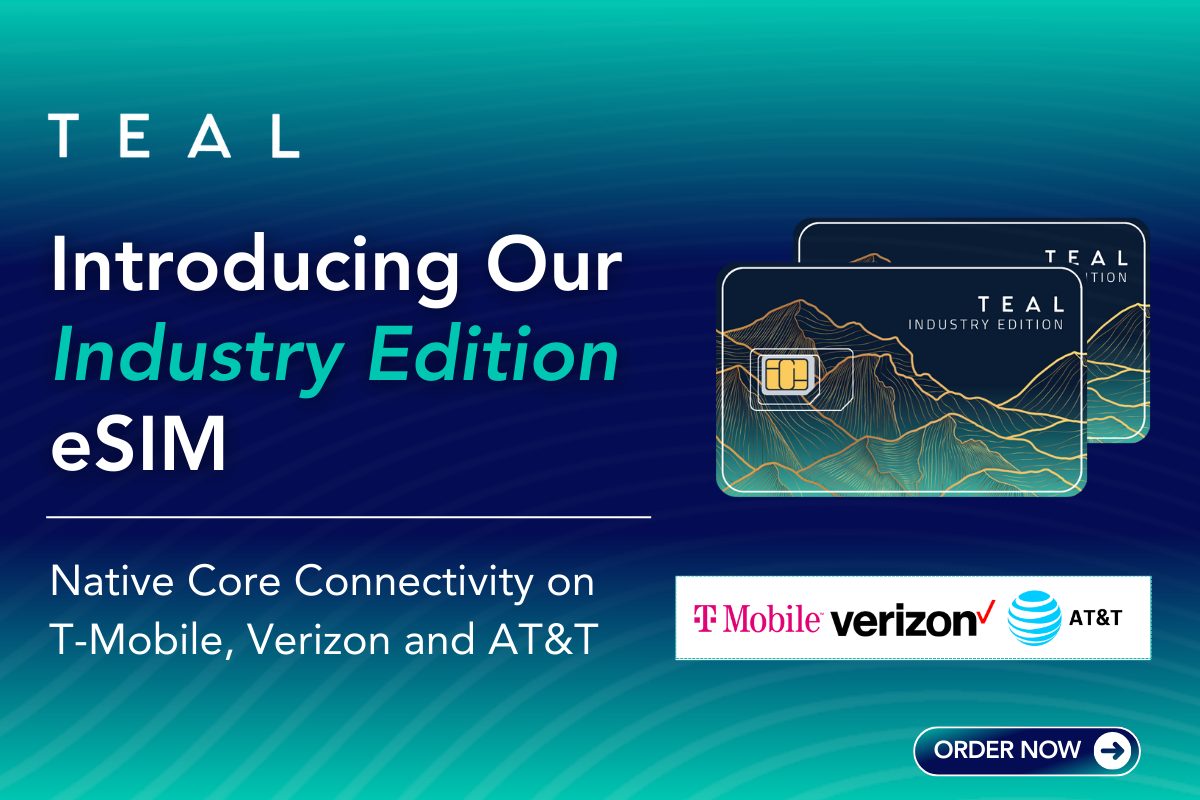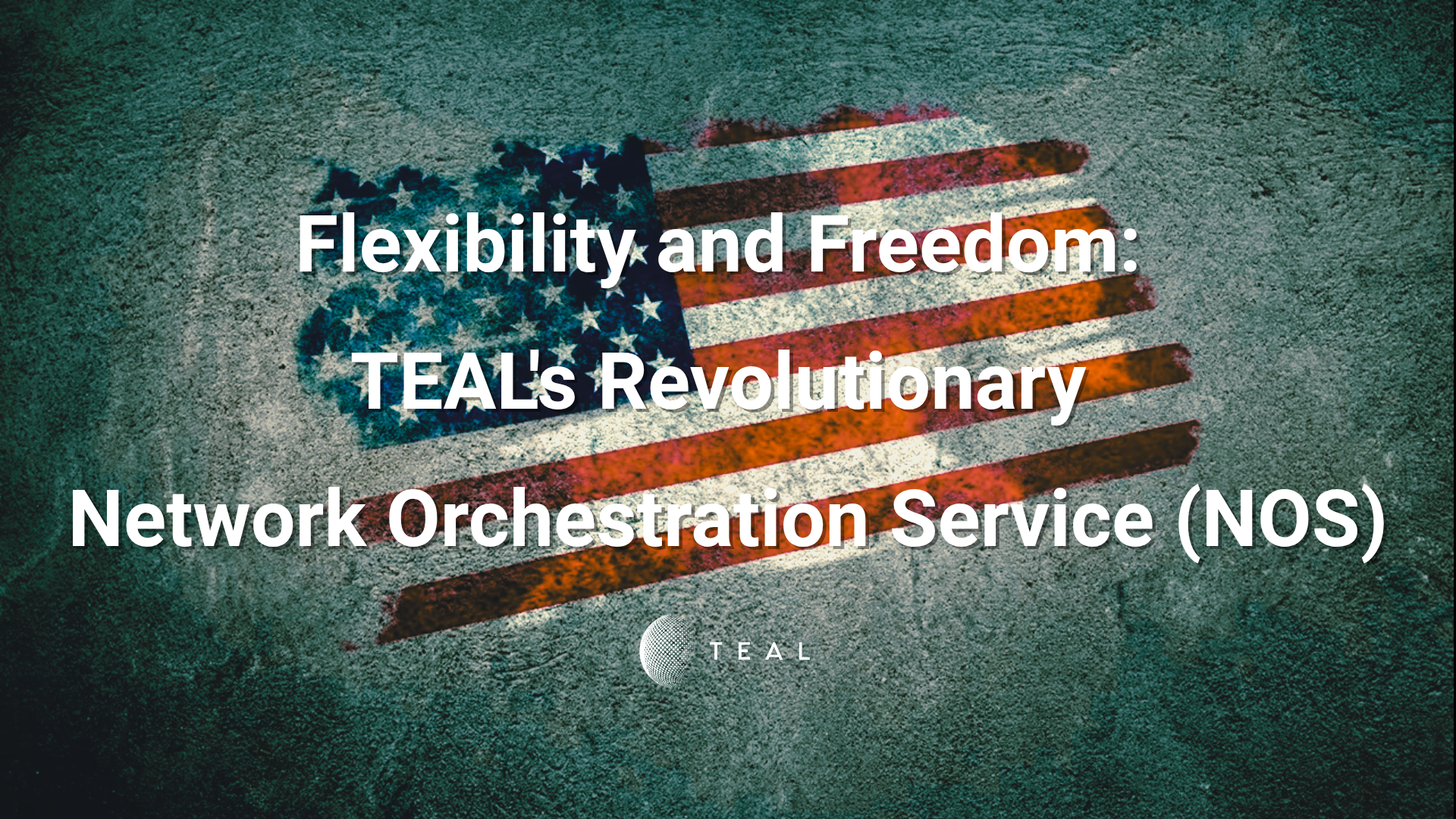High-Data IoT and the Importance of Core Network Connectivity

The Critical Path to Global Connectivity in the IoT Ecosystem
Understanding eSIM technology and the risks associated with global roaming SIMs.
In the expansive landscape of the Internet of Things (IoT) and Machine-to-Machine (M2M) communications, the backbone networks that bind these technologies are the unsung heroes of connectivity. The choice between native core networks and roaming solutions can have a profound impact, not only on the performance and security of IoT devices but also on the bottom line of businesses that rely on these technologies.
TEAL, a front runner in IoT connectivity, is redefining the dialogue with the introduction of native core connectivity for high-data IoT use cases. This article will dissect the intricacies of this vital aspect of IoT and M2M technology, addressing the concerns, and highlighting the benefits that native core connectivity, facilitated by eSIM technology, offers to businesses across industries, including reliability, data security, and competitive advantages.
The Essence of Core Connectivity in IoT and M2M Technology
While the public often associates connectivity with smartphones and consumer devices, the IoT and M2M ecosystem require a robust, reliable, and secure infrastructure to support the high-data and low-latency communication needs of a multitude of mission critical devices. Core networks serve as the lifeline for such technology, enabling the efficient transmission of data across vast cellular networks with the highest standard of security measures in place. Many MVNOs claim to offer high-data IoT connectivity, but the reality is that they are providing roaming solutions which do not provide the required reliability and consistent performance as core network connectivity.
Incorporating the latest advancements, native core networks ensure uncompromising support for IoT devices that demand uninterrupted, fast, and secure connections. The intricate interplay between these networks and the sophisticated IoT architectures guarantees a seamless operation, a significant milestone in streamlining business processes.
Roaming vs. Core Connectivity – A Comprehensive Comparison
Examining the contrast between roaming and native core network connectivity brings forward a salient argument for the latter. Essentially, roaming, while useful for many use cases, pales in comparison to the dedicated infrastructure and the subsequent performance enhancement that core network connectivity offers. Roaming solutions are a popular option, but they often lack the necessary infrastructure to support IoT and M2M devices. Roaming relies on leveraging the network infrastructure of other providers. This can cause issues with connectivity, speed, and security. In contrast, core network connectivity offers access to dedicated MNO infrastructure for these devices, which translates into improved performance. Some IoT connectivity vendors claim to offer support for high-data use cases, however, the fact that these solutions are using global roaming SIMs, means that they will run into many performance issues such as high-latency, low reliability, and little redundancy. It’s nearly impossible for a roaming solution to stand by a claim that they can consistently provide speeds upwards of 20 mb/s, because latency is the measurement of time to communicate between two computers, and it depends on a lot more than just what any MVNO can provide. The reality is that latency with roaming solutions can be unpredictable.
Why MVNO Solutions Aren’t Ideal for High-Data IoT
An MVNO is a network provider that rents airtime (radio network) from the MNOs but adds a virtual data network for the actual throughput. Connections to this network first go through an MNO tower, then an MVNO datacenter. Many MVNOs claim that they are connectivity platforms, but because they are renting their platform, it means that you’re stuck with a static, limited solution and any changes are reliant on a 3rd party. With Teal’s patented and wholly-owned eSIM platform, IoT companies can develop features and functionality without 3rd party reliance, which translates into faster go-to-market capabilities.
An MVNO still operates a virtual network. They still operate datacenters and provide a rough copy of the data architecture of the original MNO network. At first, they look easy to join and may even seem cost effective, but then they fall short when roaming agreements are suddenly blocked or when they experience higher latency due to reduced datacenter capacity.
MVNOs will assert that they offer carrier-switching, but the reality is that they only switch you between towers while datacenters remain the same. In many cases, the identity stays the same as well. Why is this bad for IoT companies? Mainly because MVNOs don’t offer redundancy and remain a single point of failure.
IoT devices that are connected onto away networks are not prioritized. This means that in some cases you may experience great performance, but in many other instances, performance will be degraded, and latency will be high. This unreliability in network speeds and availability is not ideal for most mission critical high-data applications such as video surveillance, fleet management (telematics) solutions, autonomous robotics and BVLOS drones. So, while it might seem like you are getting great global coverage at competitive rates, the reality is that your mission critical devices are put at risk and will likely experience less than advertised performance.
Contrarily, native core connectivity is purpose-built for IoT and M2M devices, ensuring consistent, high-quality service, and response, irrespective of location. The costs associated with core connectivity are also more predictable, given the absence of unexpected roaming charges, which can be detrimental to the financial health of a business. Overall, the return on investment with native core networks stands out due to the performance gains and the ability to maintain better control over connectivity infrastructure.
Diving Deeper into the eSIM Revolution
The introduction of eSIM technology has ushered in a new era for IoT and M2M connectivity, promising unparalleled flexibility and simplified network management. By adopting eSIM, businesses can circumvent several limitations associated with traditional SIM cards, such as the need for physical swapping, vendor lock-in, and the logistical challenges of managing multiple devices across various carriers.
Some MVNOs claiming to be eSIM platforms are really only offering multi-imsi solutions that don’t offer the same freedom and flexibility that true eSIM technology offers.
eSIM empowers devices with the agility to switch seamlessly between networks, with TEAL leading the charge and offering native connectivity onto America’s three Tier 1 carriers, along with support for carriers in other countries. This level of versatility coupled with robust data security infrastructures makes eSIM the definitive choice for businesses that wish to maximize the potential of their IoT and M2M investments.
Insights from Industry Experts
When it comes to navigating the complexities of IoT and M2M connectivity, insights from industry leaders are invaluable. Dan Thygesen, Senior Vice President of T-Mobile Wholesale, envisions a future where eSIM technology creates a seamless experience akin to having a T-Mobile SIM card in the device, providing unprecedented performance and reliability for IoT operations. “T-Mobile’s vision for the future includes eSIM technology such that when companies work with Teal, they get the same experience as if they had a T-Mobile SIM in their device. This can translate into superior performance compared to when they are roaming or passing traffic through data centers that aren’t operated by T-Mobile,” said Dan Thygesen, Senior Vice President of T-Mobile.
Robby Hamblet, Co-Founder and CEO of TEAL, emphasizes the ease and access that the company aims to provide with its native core connectivity. With a network pool that spans over 3500 data networks globally, TEAL’s innovative approach is not only reshaping the IoT landscape but also setting new benchmarks in the industry. “At TEAL, we want to make it easy to connect any compatible IoT device onto leading core networks, and we believe that businesses should have access to the experience that Tier 1 carriers are creating,” said Robby Hamblet, Co-Founder and CEO of Teal.
Implications and Future Trends
The transition towards a more native core-connected IoT environment is inevitable, driven by the growth in IoT deployments and the increasing need for high-performance, secure, and reliable connectivity. Businesses that are proactive in adopting these changes are likely to gain a significant competitive edge, while those lagging behind may find themselves held back by the limitations of legacy roaming strategies.
As the IoT ecosystem continues to evolve, it is crucial for businesses to keep pace with the trends and technologies that underpin it. The shift towards native core network connectivity facilitated by eSIM technology heralds a new dawn for high-data IoT and M2M use cases, promising efficiency, security, and scalability in an increasingly connected world.
In conclusion, the support of native core networks for high-data IoT use cases is a non-negotiable aspect of contemporary business operations. It provides the requisite foundation for the success and advancement of IoT and M2M technologies. With TEAL at the forefront of this transformation, businesses are well-positioned to leverage the myriad benefits of native core connectivity, ensuring their place at the vanguard of the IoT revolution.
**Experience Native Core Connectivity!**
Teal’s eSIM cards provide native core connectivity onto America’s three tier-1 carrier networks (AT&T, T-Mobile, Verizon), with additional native support for carriers in Canada, the UK, the EU, and Mexico. This translates to the same experience as if you had a T-Mobile, Verizon, or other leading SIM in your device, offering superior performance compared to roaming or using data centers not operated by these carriers. Get access to 3500+ data networks worldwide at the click of a button with Teal eSIMs that work with any IoT device that accepts a SIM card 2FF/3FF/4FF. Getting started is easy! Click here to purchase your eSIMs
Recent Posts
How TEAL’s eSIM Technology is Shaping the Future of Drone AAM Policy Under FAA Part 108
Teal Communications Staff2025-07-08T16:48:15+00:00
Empowering Freedom, Independence, and Control Through TEAL’s Network Orchestration Service (NOS)
Teal Communications Staff2025-07-03T16:40:46+00:00
Unlocking the Potential of Network Orchestration
Teal Communications Staff2025-07-02T20:45:42+00:00





